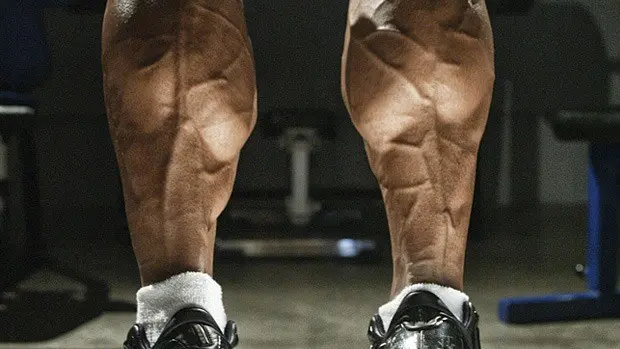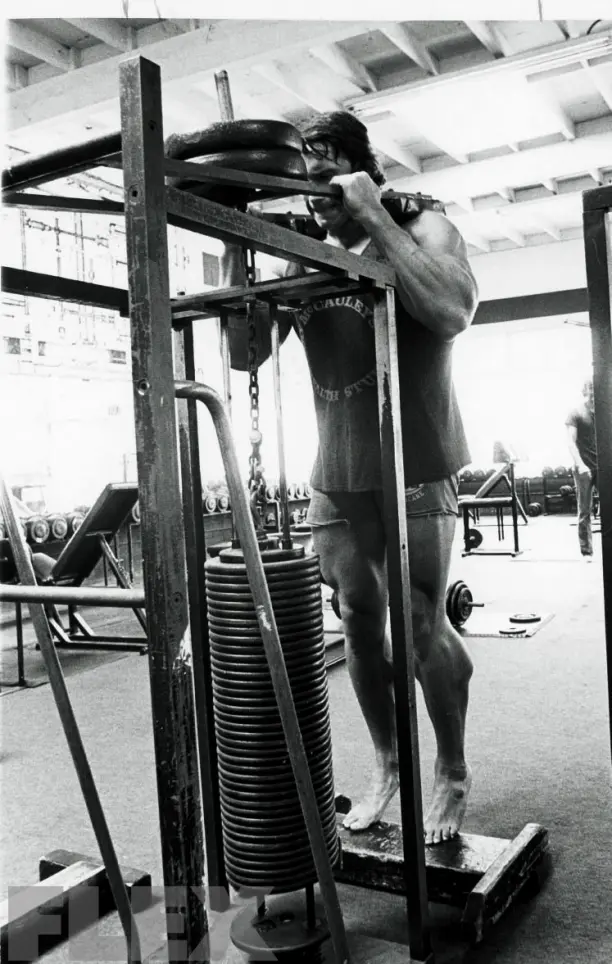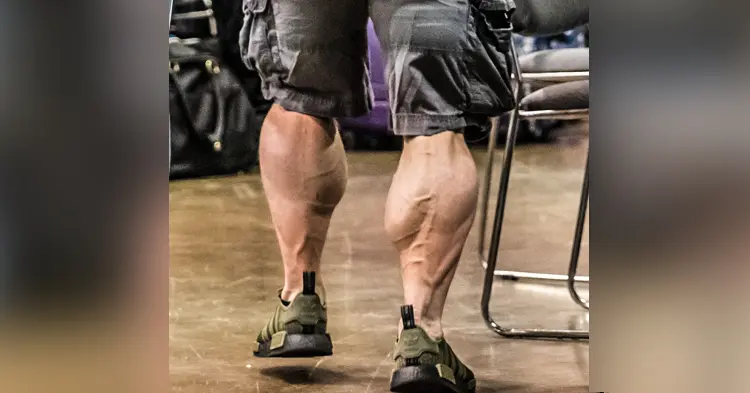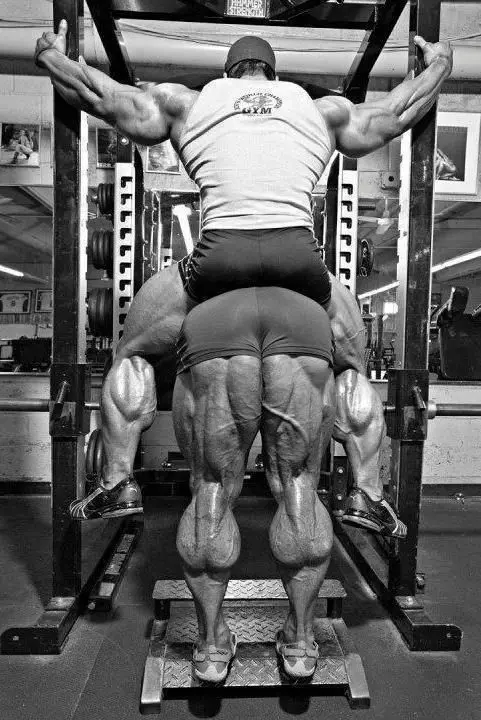Some people love showing off their calves, and then there are some who wish shorts disappear off the face of the earth. The sad part about tiny calves is that, unlike quads and hams, people don’t hate training them. The real frustration comes from their irresponsive nature.
While some people struggle to make their calves grow, few are genetically gifted. Calves can be a stubborn muscle group, especially for people with smaller frames. Heavier individuals usually have good calf development – thanks to the extra weight they carry around with them.
Reasons Why People Lack in The Calf Department
If you had to break down the reasons behind calf underdevelopment, it would boil down to these three things for the majority of people:
Genetics
We hate to break this to you but someone has to do this, so here it goes – no matter how much hard work you put in, you’re never going to look like Phil Heath – unless you’re Mystique from X-Men. Most people lack in at least one muscle group genetically. Although bad genes don’t stop you from building muscle mass, they can add to your workload.
Bodyweight
On a typical day, calves arguably take the most amount of load as compared to the other muscle groups. The amount of weight your calves carry can have an impact on their structural composition. It’s the reason you’ll probably never see a heavy person with pencil lower legs.
Level Up Your Fitness: Join our 💪 strong community in Fitness Volt Newsletter. Get daily inspiration, expert-backed workouts, nutrition tips, the latest in strength sports, and the support you need to reach your goals. Subscribe for free!
Training
Genetics and bodyweight aside, ineffective training is one of the biggest factors behind lagging calves for a majority of people. While you can’t do much about your genetics and you probably don’t want to gain 50-odd pounds just to improve your calves, adjusting your training can help you break your lower leg muscle plateau.
How To Turn Your Calves Into Bulls
Calves Are Made Up of Two Muscles
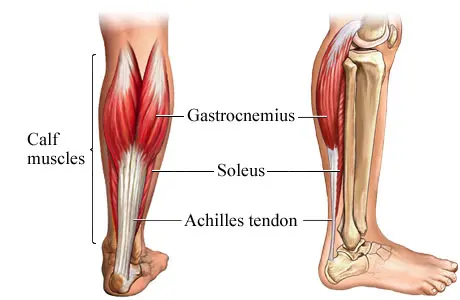
Soleus and gastrocnemius make up your calf muscles. Each of these muscles needs different exercises and training approaches to target them optimally. Doing a few calf raises won’t put an inverted heart on your lower legs.
Seated calf exercises (knees bent) target the shorter head of the calves – soleus, whereas the standing lifts (knees straight) train the gastrocnemius – longer muscle. You need to have a mix of both the type of exercises to ensure the overall development of your calves.
Follow a Full Range of Motion
Gym bros let their egos get the better of them in the gym. For some bros, the amount of weight they lift is directly proportional to their self-worth. These guys put on so much weight on the bar that they can only move it a couple of inches.
You use your calves throughout the day and your range of motion while training them in the weight room should be more than the stimulation they get while walking. You should be on your toes at the top of the movement – looking like a beautiful ballerina, and your heels should be only a couple of centimeters off the floor at the bottom.
Improve Your Tempo
If your calf workouts finish off quicker than a jackrabbit then your tiny calves shouldn’t surprise you. Time under tension (TuT) can play a major role in lower leg development. Your calves are used to carrying your body weight for longer durations.
Keeping them under constant tension for longer durations is key for sparking growth. Follow a 5:2:5:2 (five seconds in the eccentric motion, two seconds pause at the bottom, five seconds in concentric, and a two-second contraction) tempo to take your calf workouts to the next level.
Failure? What is That?
It’s better to avoid getting into the debate of if you should train to failure or not. The state of overtraining requires your workout intensity to be so high that it affects your CNS (central nervous system). The harsh truth is most people can’t ever attain the state of being overtrained even if they wanted to.
If you have weak calves, your goal should be to annihilate them. Your little figs should be filled with lactic acid and begging for mercy by the end of your workouts. Most people stop their set when they feel they’ll pull a muscle in the calves. These people give up right when it starts to make a difference. A brutal calf set is meant to feel like that. You need to push through the pain and give it all you’ve got.
Intensity & Volume
Right after you pass the training to failure debate, you fall into the intensity and volume trap. Should you perform more reps with light weights or a low number of reps with heavier weights? How many exercises and sets should you do? The answer – you should do everything, and this brings us to our next point.
Little Calves Love Surprises
If you perform the same exercises every week, your lower legs are going to get used to your training style and stop responding to your workouts. You need to add variety to your calf workouts by switching up your reps, sets, exercises, rest between sets, and TuT.
Level Up Your Fitness: Join our 💪 strong community in Fitness Volt Newsletter. Get daily inspiration, expert-backed workouts, nutrition tips, the latest in strength sports, and the support you need to reach your goals. Subscribe for free!
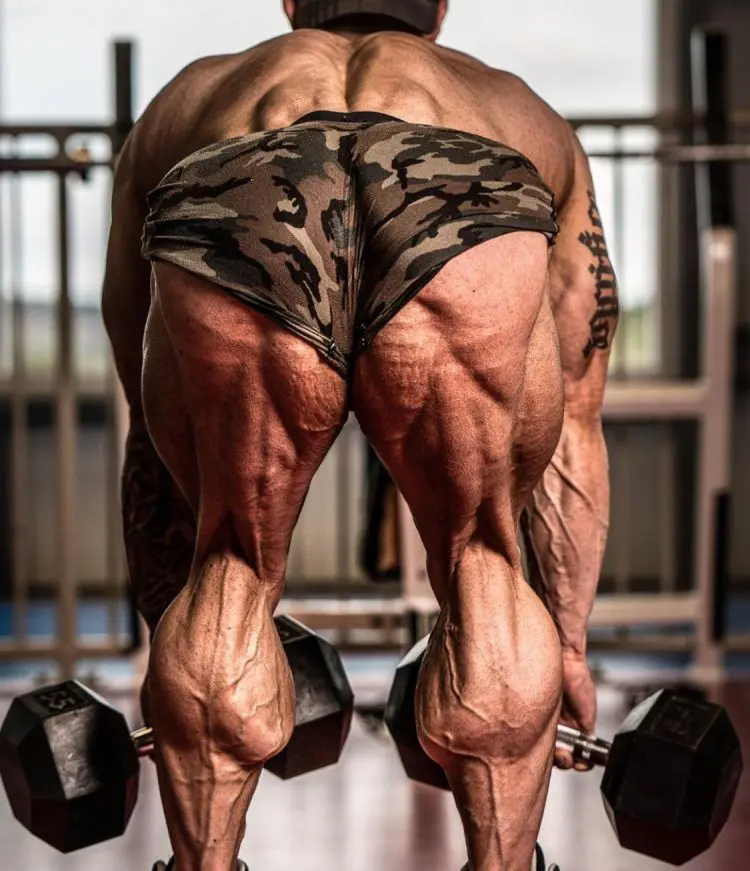
Train Them From Different Angles
You’re never going to see the needle budge in the right direction if you don’t hit your calves from all angles. Calves consist of three heads and switching up your feet placement will target your lower legs optimally. The vanilla technique (where you keep your feet parallel to each other) targets the medial calf heads.
You can target the inner heads of the calves by placing your toes wide apart on the platform while your ankles are close to each other (forming a ‘V’ with your feet). Placing the toes next to each other and the balls of feet wide apart (forming an ‘A’) will target your outer calf heads.
They Are Not Accessory Work
Most people make the mistake of treating their calves like accessory work. They train their lower legs after a grueling leg workout when they’ve got nothing left in the tank. If you treat your calves like accessories, they’re going to remain that way.
Hit Them at The Beginning of Your Workouts
Your best option for improving your laggard calves is to train them at the beginning of your training sessions. The ATP reserves tend to take a hit and recovery times widen as fatigue starts to kick in. Some people also tend to rush through the exercises at the end of their workouts which hampers the quality of the remaining exercises.
Kill’em
Many people wonder how often they should train their baby cows. ‘If they’re not sore, train them’ should be a rule of thumb when it comes to calf training. The lower legs are a stubborn muscle group because they’re used to taking a lot of beating. There is no other way but to shock your calves into growing.
You’re Just Not Enough
Calves can be worse than your ex in making you feel worthless. While most people do three sets of five exercises in all their other workouts, they are content with doing only three sets of one exercise in their calf workouts. If you’re one of these people, your ex was right about you.
No Stinking Thinking
If you’re always telling yourself that your calves are not going to grow no matter how hard you try, you’ll end up proving yourself right. Remember, bodybuilding is as much a psychological game as it is a physiological one. As the famous salesman Zig Ziglar said, “no stinking thinking”.
Rather than thinking about why your calves won’t grow and blaming your genetics, think about your workout and the effort you’ll be putting in. Visualize building the calves of your dreams. Move from a negative mindset to a positive one.
Chase the Pump
A pump is when your muscles are filled with blood and lactic acid. A pump is critical to building muscle mass as blood carries all the nutrients required for growth to the target muscle group. Bodybuilders are pump chasers. Arnold Schwarzenegger summed it up the best in the documentary Pumping Iron when he said, “a good pump is as satisfying to me as cumming is”. No one could have said it better, so we’re going to leave it at that.
Mind-Muscle Connection
You’ll never be able to turn your calves into bulls if you’re just going through the motions. You need to feel every muscle fiber contracting in your lower legs while you hold for the squeeze at the top of the movement. If you have trouble establishing a mind-muscle connection, try performing unilateral exercises until it becomes second nature.
If you’re unable to achieve a pump or mind-muscle connection, you’re probably going too heavy. Lighten the load and feel the contraction and stimulation in your calves as opposed to focusing on impressing the hot girl working on the glute machine.
A Kickass Calves Workout
Enough with the lip service. We thought we’ll end the article with a calf workout that’ll leave you limping throughout the week.
- Donkey Calf Raises – 3 Sets 20 Reps (5:2:5:2)
- Seated Calf Raises – 2 Sets 40, 30 Reps (no tempo), 2 Sets 20 Reps (5:5:5:5)
- Single-Leg Leg-Press Machine Calf Press – 4 Sets 10 Reps (5:2:5:2)
- Standing Calf Raises – 5 Sets 50, 40, 30, 40, 50 Reps
Read also:
- Best Old-School Calf Workouts & Exercises
- The 11 Most Effective Calf Raise Exercises
- 6 Awesome Calf Exercises You’re Probably Not Doing But Should Be
Take-Away
It’s time you start treating your calves like you treat all your other major muscle groups. Stop the step-motherly behavior with your lower legs, and while you’re at it, make sure you make up with them for all the times you spent ignoring and ridiculing them.

